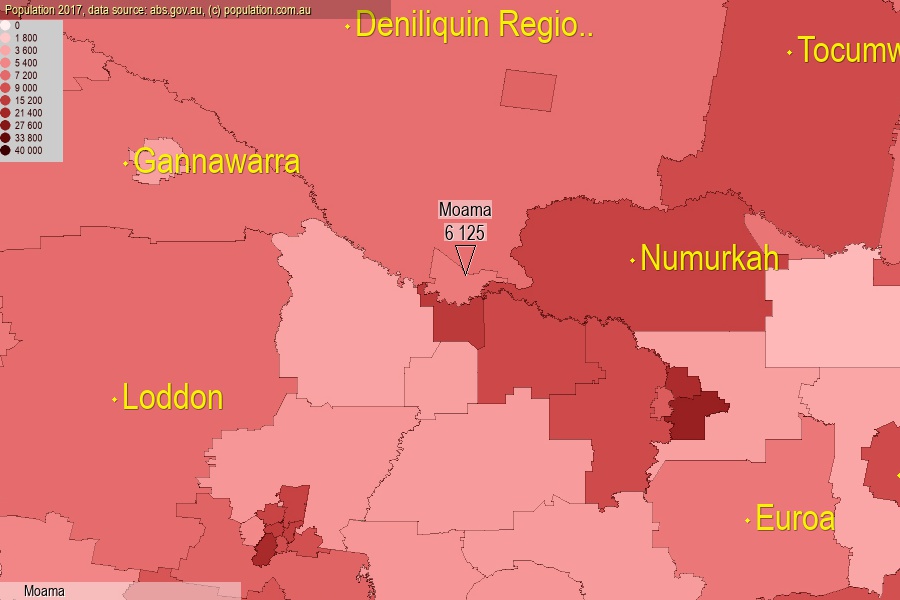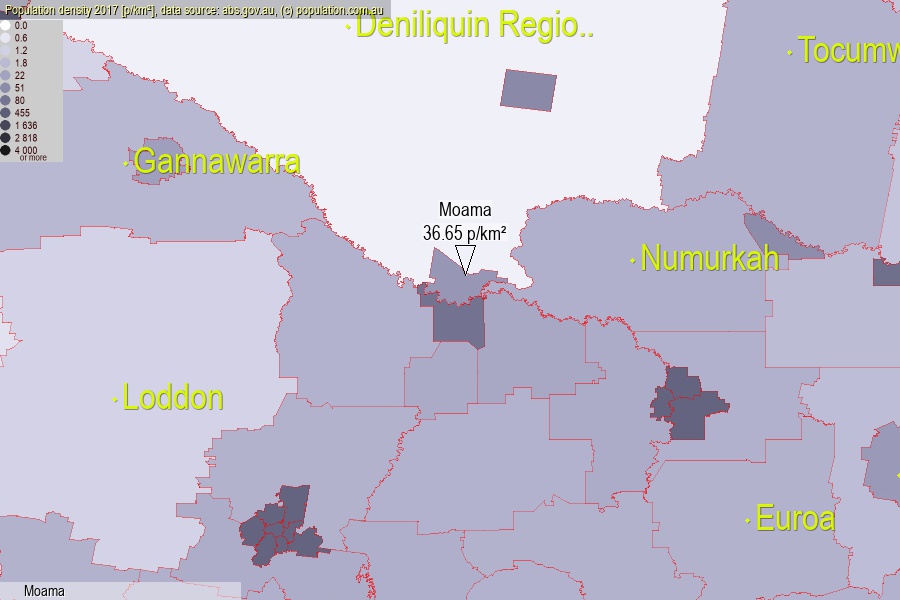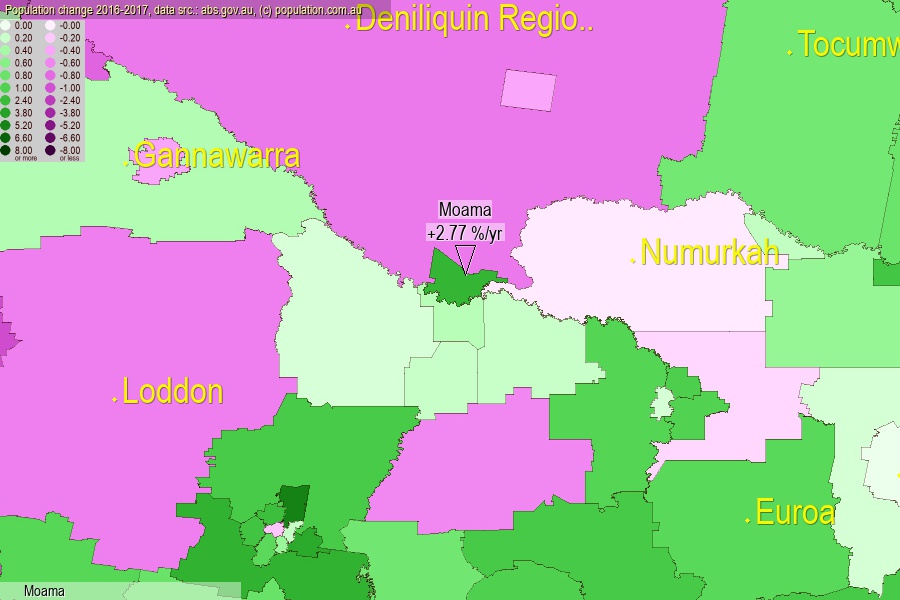 population.com.au
population.com.auLast official estimated population of Moama (as Statistical Area Level 2) was 6 125 people (on 2017-06-30)[2]. This was 0.02% of total Australian population and 0.077% of NSW population. Area of Moama is 167.10 km², in this year population density was 36.65 p/km² . If population growth rate would be same as in period 2016-2017 (+2.77%/yr), Moama population in 2025 would be 7 621. [0]



Click to enlarge. Moama is located in the center of the images.
Population [people], population density [p./km²] and population change [%/year] [2]
View borders » (new window) [4]
[1991-1992] +3.56 %/Yr.
[1992-1993] +3.62 %/Yr.
[1993-1994] +2.49 %/Yr.
[1994-1995] +3.07 %/Yr.
[1995-1996] +3.37 %/Yr.
[1996-1997] +4.31 %/Yr.
[1997-1998] +6.28 %/Yr.
[1998-1999] +5.54 %/Yr.
[1999-2000] +3.41 %/Yr.
[2000-2001] +4.58 %/Yr.
[2001-2002] +3.30 %/Yr.
[2002-2003] +2.88 %/Yr.
[2003-2004] +1.98 %/Yr.
[2004-2005] +2.36 %/Yr.
[2005-2006] +4.44 %/Yr.
[2006-2007] +6.54 %/Yr.
[2007-2008] +3.32 %/Yr.
[2008-2009] +2.02 %/Yr.
[2009-2010] +1.21 %/Yr.
[2010-2011] +0.55 %/Yr.
[2011-2012] +3.17 %/Yr.
[2012-2013] +2.51 %/Yr.
[2013-2014] +2.36 %/Yr.
[2014-2015] +2.09 %/Yr.
[2015-2016] +1.90 %/Yr.
[2016-2017] +2.77 %/Yr.
[0] Calculated with linear interpolation from officially estimated population
[1] Read more about SA2 and Australian Statistical Geography Standard (ASGS) on abs.gov.au
[2] Population data from Australian Bureau of Statistics (Population and density: 2017; change: 2016-2017)
[3] Digital Boundaries: Australian Statistical Geography Standard (ASGS) 2016.
[4] Border coordinates are simplifyed using Ramer-Douglas-Peucker algorithm.